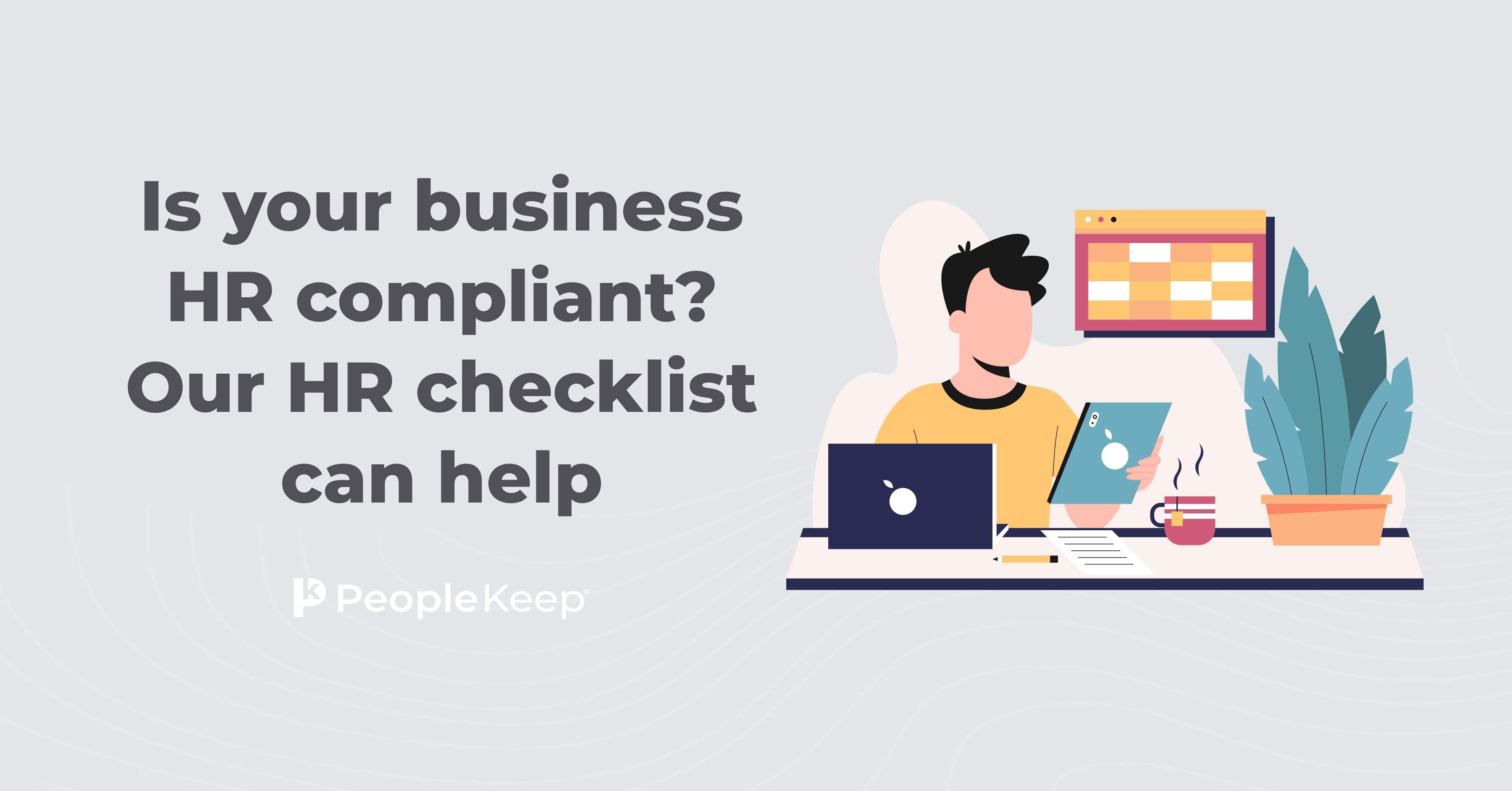How to get buy-in from stakeholders on HR initiatives
By Holly Bengfort on March 8, 2023 at 9:10 AM
You've got big ideas, and now it's time for action. But it takes a team to make meaningful HR initiatives stick. So, how do you get your leadership team and other stakeholders on board?
As a human resources professional, you need stakeholders to listen, understand, and support your views before they give you the go-ahead to spend time and money on things you want for the organization.
Whether you're focusing on office culture or the overall success of the entire organization, there's a wide variety of HR initiatives you can focus on.
In this article, we'll discuss what HR initiatives are, some common examples, and how you can get buy-in from stakeholders in order to succeed.
What are HR initiatives?
The human resource department for a small business or larger company has the power to make a lasting, positive impact. Innovative HR practices, initiatives, or strategic priorities improve performance over time. It's a game plan meant to help a human resource department focus on growing talent acquisition, reducing turnover, enhancing the hiring process, boosting employee engagement, and bolstering employee development across the organization.
Common examples of HR initiatives
There's really no limit to what your HR initiatives can be. You can let your creativity lead the way or look at what's working well for other HR departments.
The Academy to Innovate HR1 (AIHR) offers a few innovative examples. They include:
-
Introducing platforms for collaborative work. There are several software options to choose from for communication, team meetings, and project and task management. You have Slack, Zoom, HubSpot, and Google docs, to name a few.
-
Hybrid workplace design. The COVID-19 pandemic increased the popularity of remote work. Several companies and organizations have made adjustments to give their employees some added flexibility. A hybrid office design gives your employee the freedom to choose: do they want to be a remote worker? Or a traditional, in-office worker today? Of course, your own hybrid policy could also determine their work-from-home schedule.
-
Employee recognition and appreciation programs. When you recognize key talent for a job well done, you remind them they play an important role in your organization. This can lead to increased productivity, performance, and better employee relationships throughout the employee life cycle.
-
Resilience training. This type of training can focus on things like managing emotions, improving interpersonal communication, and coping with stress.
What is HR focusing on in 2023?
Heading into 2023, Gartner2 conducted an annual survey to identify what HR leaders planned to focus on to improve the workplace in the year ahead.
Their top 5 strategic HR priorities for 2023 included:
- Leader and manager effectiveness. The survey found 24% of HR leaders say their leadership development approach doesn’t prepare leaders for the future.
- Organizational design and change management. The survey also found 45% of HR leaders say their employees are fatigued from constant change.
- Employee experience. Survey results showed 44% of HR leaders believe their organizations don’t have compelling paths toward career development.
- Recruiting. Additionally, 36% of HR leaders surveyed say their sourcing strategies are insufficient for attracting the skills they need.
- Future of work. Finally, survey results showed 43% of HR leaders say they don’t have a future of work strategy.
How to get buy-in from stakeholders
Once you've nailed down some great ideas, it's time to bring in some help to make them happen. Getting buy-in from stakeholders in your organization means having their support. Here's how to grab their attention and keep it.
Clearly define the problem
Once you've settled on an area that needs work, bring it to the attention of your leadership team. Explain to your colleagues why this issue hinders the organization's success, and then present your solution to the problem. Provide examples of how your idea would improve the situation. This is also a good time for you to take ownership of what you can handle and point out the gaps where you'll need more assistance.
Know your audience
Think about what's important to each of your stakeholders and how they'll react to hearing your initiatives. Ask yourself: Why should they care? What's in it for them? What will the organization get out of this? Knowing these answers ahead of time will help you curate your pitch in a way that piques their interest.
Be open to feedback
After presenting your idea, it's natural for others to give feedback. Be open to what your team has to say. Inviting others to expand on your idea could make it better in the long run. It also shows that you're a team player who's willing to compromise.
Use the power of HR data
Along with observations and opinions on the matter at hand, use concrete data to back it up. HR metrics are key figures for accurately tracking an organization's human capital, people strategy, and the effectiveness of its HR programs. They offer valuable insight into your organization's overall efforts. Use the data at your disposal to better explain your initiatives. Most stakeholders are known to make data-driven decisions rather than emotional ones.
Create strong relationships ahead of time
Never underestimate the power of your interpersonal skills. Being a familiar face in your organization is important. Try to get to know employees at all levels, from the entry-level to the executives. Not only does this give you a better grasp of how your organization functions from their perspectives, but you'll also get an idea of who may be interested in supporting your initiatives.
Here are six tips for how HR professionals can gain employee trust while building rapport:
- Be straightforward. Most employee policies are often determined at the leadership level. It's then up to HR to administer the programs, educate the entire workforce, and evaluate the ongoing success of key initiates. Even though HR isn't the final decision maker, it does become the face of employee satisfaction and overall wellbeing. Because of this, welcome any questions from employees, listen to their needs, and communicate employee feedback to your leadership team.
- Be sincere. Most HR professionals deeply care about their employees and want to help. At the same time, HR holds information they can’t share with every employee. To balance this, say, “I’m sorry, but I can’t go into detail about that with you... Tell me more about your concerns.”
- Keep an open door. It’s natural for employees to look to you for questions, support, expertise, and problem-solving. Embrace this, and keep an open door policy for employees.
- Explain the details. When employees have questions on the "why" or "how," take the time to answer employees' questions in detail. Providing a detailed answer will also make employees more self-sufficient, helping your efficiency in the long term.
- Show you care, confidentially. In HR, you handle questions about employee health benefits, HR policies, and procedures. You also help employees with personal, sensitive concerns. Showing sensitivity to what employees are going through will make them feel more comfortable coming to you with their concerns. At the same time, be upfront with the employee about confidentiality and draw boundaries as appropriate.
- Consistency is key. Be consistent with how you communicate and the information you provide. This will create positive morale among employees and leadership and help you gain employee trust.
Conclusion
As a human resources professional, you play a crucial role in creating meaningful change within your organization. When it comes to HR initiatives, you have hundreds of options to choose from; you just have to get your stakeholders to back you up. With the right HR initiatives, you can have happier employees, improved communication, and better business outcomes.
Check out more resources
See these related articles

What is the employee life cycle?
Understanding the employee life cycle is crucial for HR teams. Dive into this guide to gain insights on each stage and optimize your management strategies.

Is your business HR compliant? Our HR checklist can help
Is your business HR compliant? Our easy-to-use HR checklist will help you assess and improve your HR processes. Stay compliant and protect your business today.

How to set your first HR department up for success
Learn what an HR department is and how to set up your first one for success. Discover key roles, tools, and strategies to support your growing team.


